Cabochons are unique types of gemstones that have captured the hearts of jewelry makers, artists, and stone collectors for centuries. Cabochon jewelry is a very popular way to present gemstones, commonly set in rings, pendants, and bracelets. Beyond their modern allure, cabochon gemstones offer timeless, elegant craftsmanship of ancient times.
In this guide, we will explore what cabochon jewelry is, how it is made, and the differences between cabochon and faceted gemstones.
What is Cabochon Jewelry?
Cabochon originates from the French word ‘caboche,’ which means ‘head.’
But what does cabochon mean in jewelry?
It is a polished gemstone with a dome top and a flat bottom. While the round, smooth shape of a cabochon shows a high-saturated color, its thickness helps to cover most of its natural inclusions.
Cabochon gemstones are commonly used as centerpieces in jewelry, especially in rings and pendants. They can also be used for earrings, bracelets, and other accessories.
Types of Stones Used in Cabochon Jewelry
Popular Cabochon Gemstones
Cabochon jewelry making often features stunning gemstones like turquoise, moonstone, and opal, each prized for its unique appeal. The cabochon process is usually applied to softer gemstone materials, opaque gemstones, and precious stones, which display special effects such as cat’s eye and asterism.
- Turquoise cabochons are popular in bohemian and southwestern jewelry for their vibrant blue-green hues.
- Moonstone cabochons display a captivating glow, making them a favorite in elegant and vintage designs.
- Opal cabochons are known for their mesmerizing play of color, which adds an ethereal touch to rings and pendants.
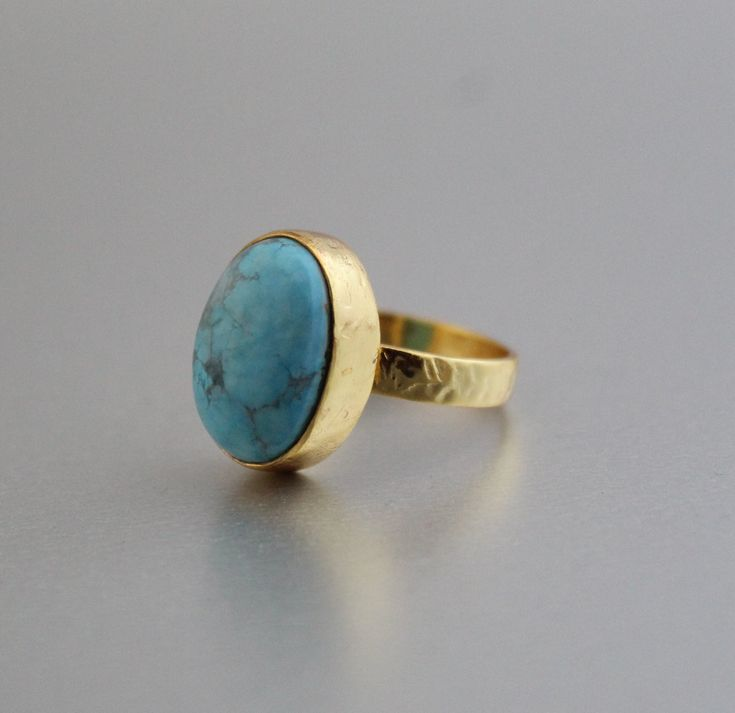
Source: Pinterest
Precious Cabochon Gemstones
Precious cabochon jewelry gemstones like ruby, sapphire, and emerald, are loved for their vibrant colors and distinctive characteristics.
- Emerald cabochons, with their lush green color, bring a refined and luxurious touch to jewelry.
- Ruby cabochons radiate deep red hues, symbolizing passion and elegance.
- Sapphire cabochons offer a rich blue color and durability, making them a perfect choice for eye-catching pieces of jewelry.
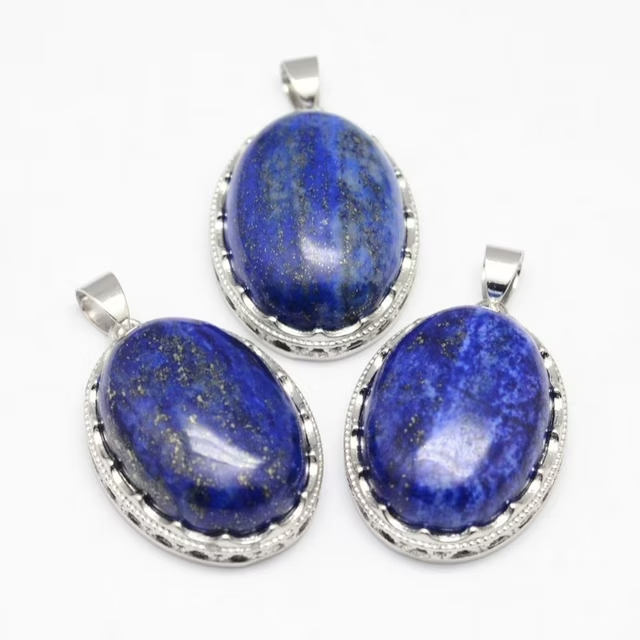
Source: Pinterest
Why Choose Cabochon Jewelry?
- Aesthetic Appeal: Cabochon stone jewelry has smooth, polished surfaces that beautifully highlight the gemstone’s color and pattern. They also display fascinating visual effects, making them perfect focal points in various jewelry pieces.
- Durability and Practicality: These gemstones are durable and practical, so they’re perfect for everyday wear. They are made to withstand wear and tear without losing their luster and shine.
- Versatility in Jewelry Design: The unique light reflection and depth of color in cabochons, as well as their ability to be cut into a wide range of sizes and shapes, make them versatile in the jewelry industry.
What is a Cabochon Cut?
A cabochon cut refers to one of the different types of gemstones and cutting techniques that result in a smooth, rounded surface without facets. It typically has a convex top and a flat base, enhancing the stone’s natural color, luster, and unique inclusions.
Cabochon cut is often used on softer stones, which would fracture if faceting was attempted. Common cabochon shapes include oval, round, pear, and rectangular, though custom shapes can be created for unique jewelry designs.
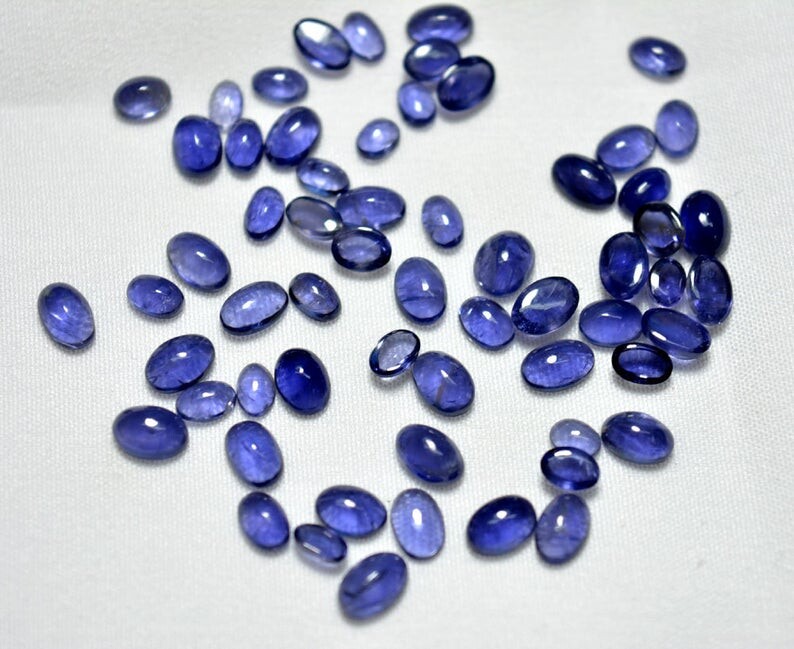
Cabochon vs Faceted: What’s the Difference?
Cabochon and faceted gemstones differ in many ways, from how they look to how long they last. But before we dive into their differences, what does faceted mean?
A faceted gemstone has a flat top, polished faces called facets across it, and a pointed bottom. Comparing cabochon vs faceted gems, here’s a list of differences to be aware of:
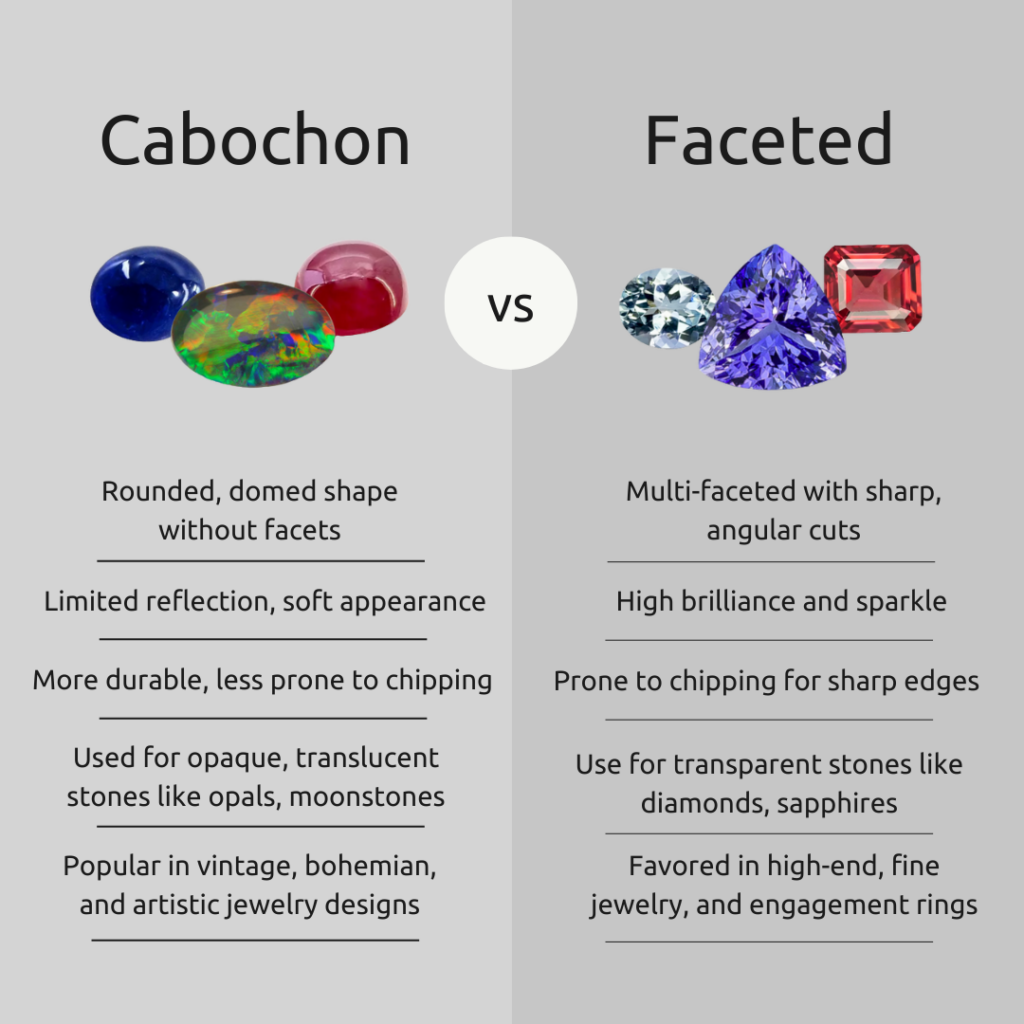
Appearance
- Cabochon gemstones have a smooth, rounded shape with a dome top and flat bottom. They often have natural inclusions and markings.
- Faceted gemstones are multifaceted with sharp, angular cuts and a pointed bottom.
Light Reflection
- Cabochons give off limited reflection and a soft appeal. These stones display optical effects like stars and cat’s eyes as well as colors of opaque and translucent stones to enhance the stone’s details.
- Faceted stones have high brilliance and sparkle. They maximize a stone’s brilliance by refracting light inside the gemstone and reflecting light on the outside.
Best for Gem Types
- Cabochon stones are usually used on softer species, such as opals, moonstones, opaque gems, and translucent stones.
- Faceted stones are used on harder gemstones that are transparent or “clean” like diamonds and sapphires. This is so that inclusion or markings would not disturb the light passing through the stone.
Durability and Wearability
- Cabochons have surfaces that make them resistant to chipping and well-suited for everyday wear. Their polished finish also minimizes the visibility of scratches.
- Faceted gemstones feature surfaces that create sharp edges, making them more prone to damage.
Trend Appeal
Faceted stones have a modern and elegant appeal, making them a popular choice in contemporary and high-end jewelry trends.
Cabochons offer a timeless and vintage look that’s popular in bohemian and artistic jewelry designs.
How to Make Cabochon Jewelry?
Here’s a step-by-step guide on how to make cabochon jewelry:
Step 1: Selecting the Gemstone
The first step in cabochon jewelry stone making and setting is selecting a suitable gemstone that is ideal for shaping. Look for stones with appealing colors and patterns, few inclusions, and the right size & shape.
Step 2: Cutting the Cabochon Shape
As soon as the perfect stone is chosen, outline the desired shape using a template and cut the rough form. Use a grinding wheel to refine the shape, ensuring the edges are smooth and rounded.
Step 3: Setting the Cabochon
Decide on a setting style, such as a bezel or wire wrap. In a bezel jewelry setting, place the stone in a metal frame and carefully secure the edges. Wire wrapping offers a more intricate method, using artistic wire techniques.
Step 4: Finishing Touches and Polishing
Once the cabochon is securely set, inspect the piece for any sharp edges or loose fittings. Polish the metal using a jewelry buffer, polishing cloth, or compound to enhance its shine. Lastly, examine the piece for any rough spots and clean it with a soft cloth or jewelry cleaner.
How to Set a Cabochon – Cabochon Setting Methods
Cabochon setting is a delicate art that displays the stone’s beauty and ensures its protection. Here are the most common cabochon settings:
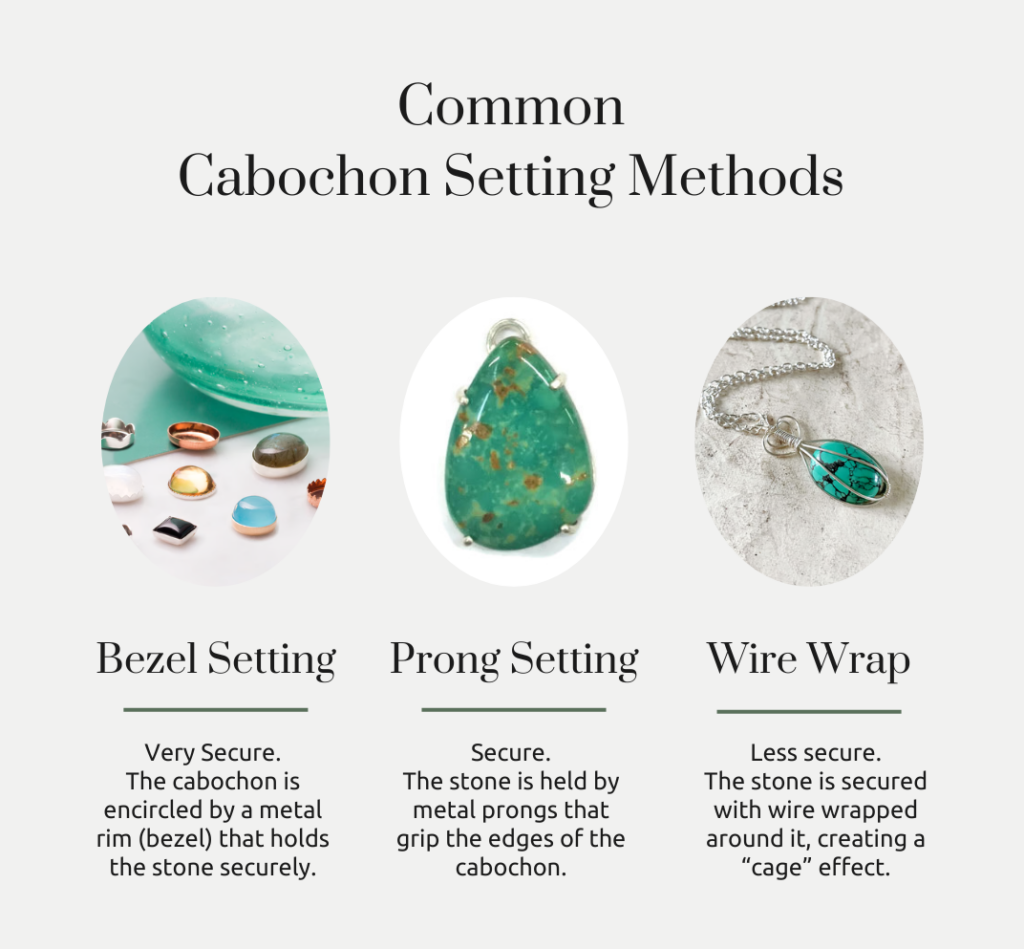
Cabochon Bezel Setting
Bezel jewelry setting involves using a metal rim to encircle the stone and secure it in place. The metal rim also serves to accentuate the cabochon’s smooth, domed surface.
Advantage
- Offers superior protection, reducing the risk of chipping or breaking.
- Ensures a stronghold, making it perfect for everyday wear.
Ideal for
- Rings, pendants, and earrings where protection from wear is key.
- Suitable for silver, brass, and gold, but not suitable for stainless steel.
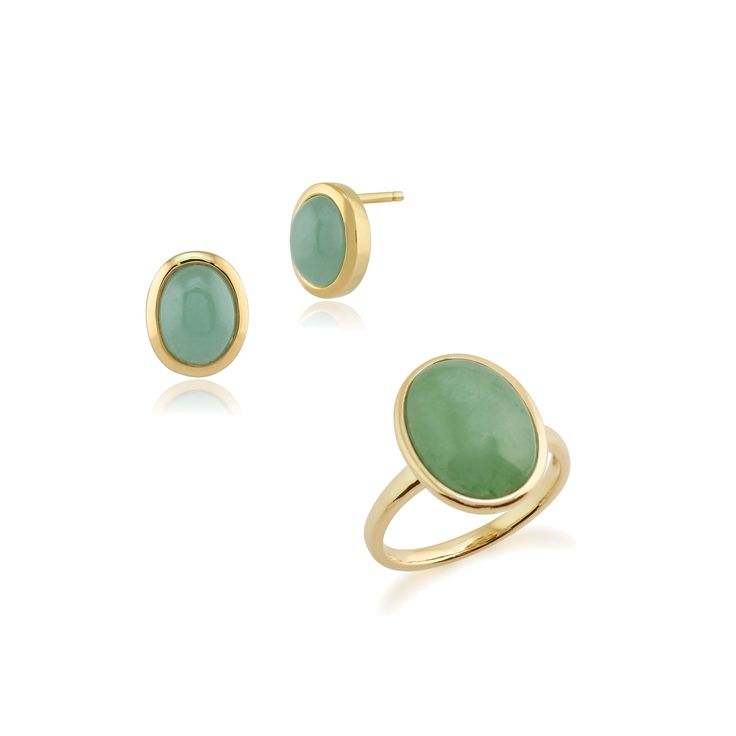
Source: Pinterest
Cabochon Prong Setting
Prong settings use three or more metal claws/prongs to hold the cabochon in place, without covering much of its surface. While this method of cabochon settings is less common, it can offer a more open appearance.
Advantage
- Highlights the stone’s natural beauty by exposing more of its surface.
- Requires less metal, making it lightweight and cost-effective.
Ideal for:
- Custom designs with larger cabochons in rings and pendants.
- Harder gemstones that can withstand exposure.

Source: Pinterest
Cabochon Wire Wrapping
Wire wrapping is a setting technique that uses thin metal wires to secure the domed precious stone without the need for adhesives or soldering. The wire is wrapped creatively around the stone, often forming intricate patterns on rings, pendants, and earrings.
Advantage
- Enables unique, artistic, and customizable designs.
- Preserves the cabochon as it avoids drilling or heat exposure.
Ideal for:
- Irregularly shaped cabochons that may not fit standard settings.
- Handcrafted and artisan jewelry pieces.
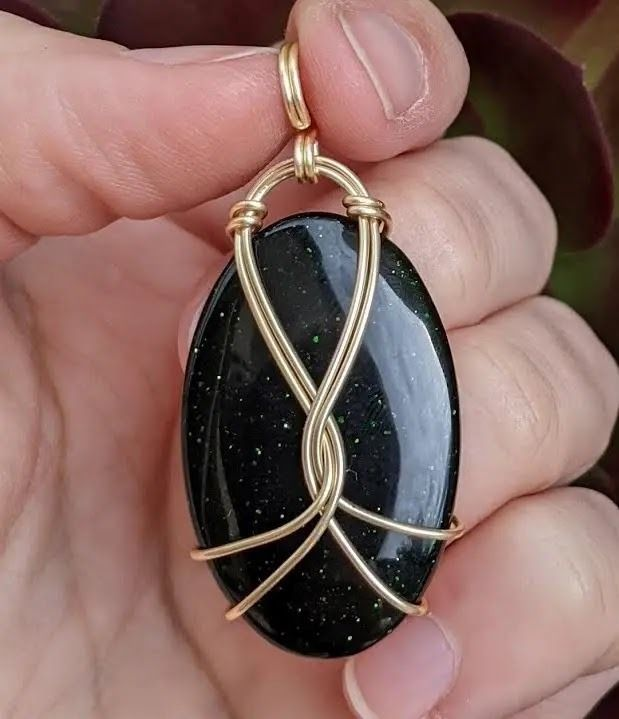
Source: Pinterest
Tips for Jewelry Brands When Creating Custom Cabochon Jewelry
When creating custom cabochon pieces, from jewelry design and CAD modeling to production and finishing, here are some key considerations:
Prioritize Stone Selection
Choosing ethically sourced materials to enhance your sustainability and responsible sourcing practices. It’s important to prioritize cabochons with striking patterns and rich colors that enhance visual appeal. High-quality stones not only improve the overall design but also build customer trust and strengthen your brand’s reputation.
Optimize Protective Settings
Bezel settings are ideal for soft stones and high-wear jewelry pieces like rings, as this setting offers enhanced security. Avoid prong settings for brittle gems like opal, as they may loosen over time, increasing the risk of damage or chipping.
Consider Material Selection
Stainless steel presents challenges in bezel-setting cabochon gemstones, often leading to gaps or uneven pressure that affect stone security. However, skilled craftsmanship from a sustainable jewelry manufacturer may overcome these issues. For better results, it’s best to use silver, brass, or gold as they offer improved workability and durability for custom jewelry.
Focus on Versatile Designs
Design cabochon jewelry to suit diverse styles and occasions. Versatile cabochon settings enable customization and incorporation into a wide variety of unique jewelry pieces.
Prioritizing customizable designs enhances marketability, ensuring long-term relevance across different fashion trends and personal preferences.
FAQs
Can Cabochon Come in Different Shapes?
Yes! Cabochons can come in a whole range of sizes and shapes, including round, oval, teardrop, square, and freeform, among others.
Are Cabochons Valuable?
Cabochons can be highly valuable, especially when crafted from premium or rare gemstones. The worth of the cabochon significantly depends on the gemstone value.
Is Cabochon Expensive?
Cabochon prices vary based on gemstone type, size, quality, and rarity. Premium stones like opal and sapphire can be expensive.
Key Takeaways
Cabochon jewelry showcases the timeless beauty of smooth, domed gemstones, captivating jewelry designers and collectors alike. Whether bezel-set, prong-set, or wire-wrapped, cabochon settings provide protection while highlighting the gemstone’s natural beauty.




